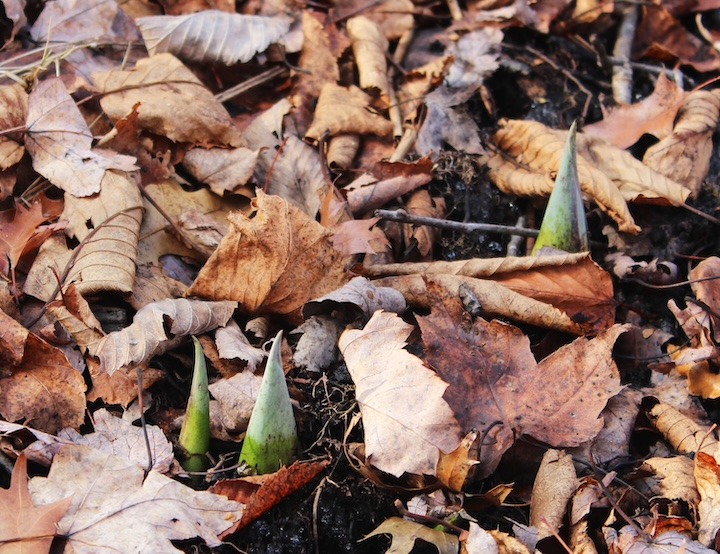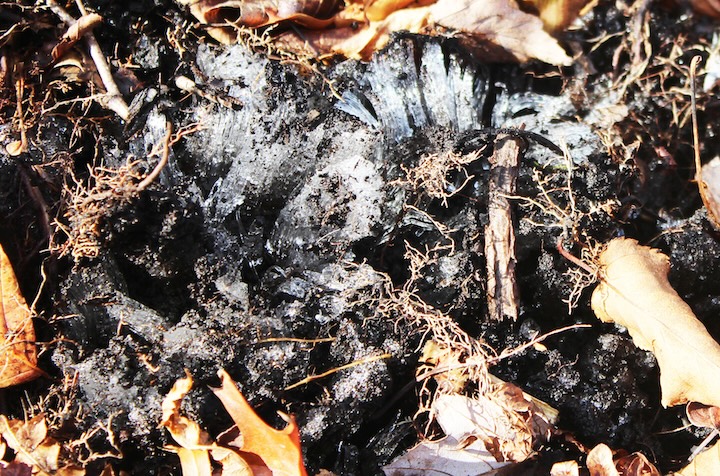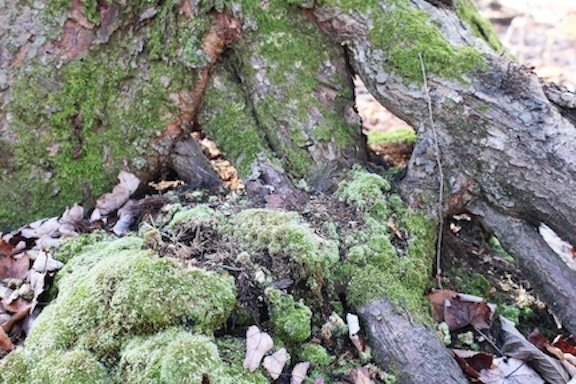Walking in Beauty
December 13, 2023
Wooded wetlands wears winter greenery
Flora Husselman Trumbull Nature Area is alive with lush, dank magic, even on a cold winter’s day.
Primarily wooded wetlands, the preserve and its extension to the west are a valuable natural resource, capturing and filtering runoff in the Clear Lake watershed.
Skunk cabbage, welcomed as one of the first plants of spring in northeastern Indiana, is already peeking through the muck.  The green pips spike the spongy forest floor, ready to bloom in the spring and attract early pollinating insects.
The green pips spike the spongy forest floor, ready to bloom in the spring and attract early pollinating insects.
Bright green moss covers long-fallen logs and high spots in the mucky preserve, creating a fluffy looking fairy land. With each step you see new perspectives, each more beautiful than the next.
Ice formed in the mud where deer hooves splashed through, leaving crystalline shards. The birch trees shine silver in the sunlight.

Above, skunk cabbage pokes through the forest floor. At left, ice crystals streak mud pocked by deer tracks.
I visited Flora to survey recent forestry work, which wraps up an Environmental Quality Incentives Program (EQUIP) grant from the Natural Resources Conservation Service that addressed several Conservancy properties and the woods at Clear Lake Lutheran Church.
In the north portion of Flora Husselman Trumbull, no obvious disturbance had been made, and work was also light in the Conservancy’s woods at Koeneman Lake, though it significantly opened the understory on the western end of the forest.
The goal is to encourage growth of strong, resilient native trees like oak, walnut and tulip. Tree species like oak, hickory and beech produce hard mast – acorns, hickory nuts and beechnuts – that provide food for wildlife. At Flora Husselman Trumbull, yellow birch trees drop seeds that look like little pinecones, eaten by many types of wildlife, including deer, songbirds and squirrels.
 Moss grows around the exposed roots of a tall tree at Flora Husselman Trumbull Nature Area.
Moss grows around the exposed roots of a tall tree at Flora Husselman Trumbull Nature Area.
